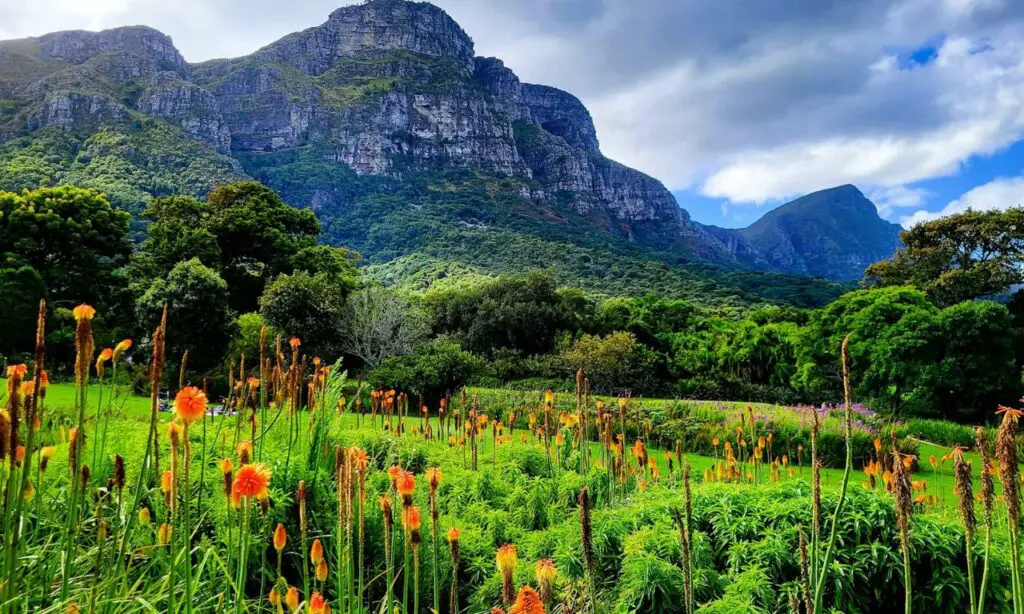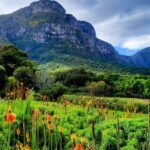When you’re thinking about relaxing spots in Cape Town, Kirstenbosch National Botanical Garden might just pop up in your mind.
This garden isn’t just another park; it’s a special piece of South Africa’s heart, filled with so much beauty and history. It’s where you can find a whole bunch of plants and flowers, and even better, they’re all from our own backyard, South Africa.
This place, nestled against the eastern slopes of Table Mountain, has been around for more than a century and keeps people coming back with its awesome views, cool activities, and important work in saving our natural environment.
We’re going to chat about the amazing plants that call this place home, the fun things you can do like listening to live music under the stars, why this place is like a superhero for our green friends, and all you need to know to plan your own visit.
Let’s go.
Key Takeaways
- Kirstenbosch National Botanical Garden is a historic and beautiful spot right by Table Mountain in Cape Town.
- The garden is home to a huge variety of plants, including many that you can only find in South Africa.
- Visitors can enjoy a bunch of cool activities, like going for walks, watching outdoor concerts, or just chilling with a snack on the grass.
- Conservation and research are big deals here, with lots of projects going on to protect our unique plants and animals.
- To have the best visit, you should know about the best times to go, the cost of entry, and a few tips like wearing comfy shoes.
Introduction to Kirstenbosch
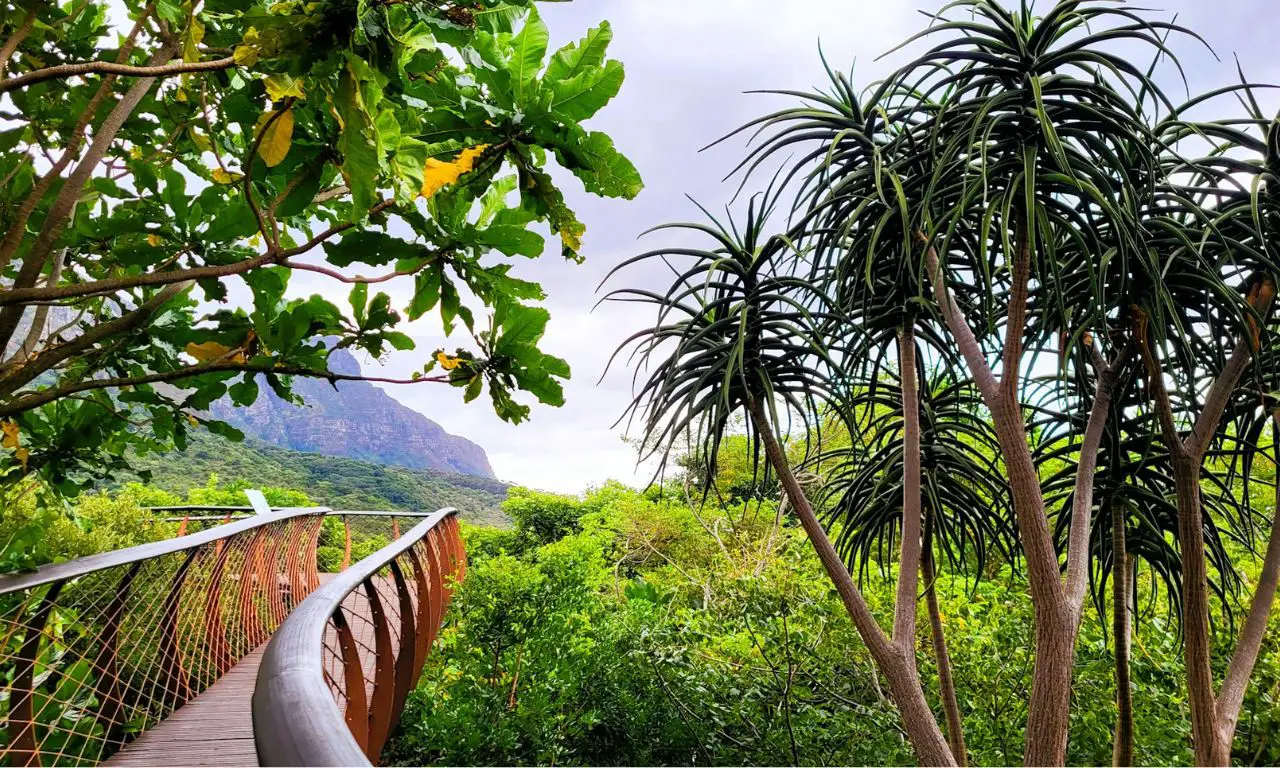
Imagine a place where every step takes you through a bit of history and closer to nature.
That’s Kirstenbosch National Botanical Garden for you.
It’s not just any garden; it’s one of the great botanical gardens of the world, right here in our city of Cape Town. Way back in 1913, someone had the smart idea to turn this piece of land into a garden just for our local plants. Today, it’s a living library of the unique plants that grow in South Africa.
It’s really cool because it shows off the plant life from different parts of the country. Plus, it’s not just for looking. Kirstenbosch is where scientists come to learn about plants, where teachers bring kids to connect with nature, and where anyone can have a good time and feel at peace among the greenery.
It’s like a green heart pumping life through our city. And let’s not forget, it’s hugging the slopes of the famous Table Mountain, which means the views are just epic.
The Beauty and Diversity of the Gardens
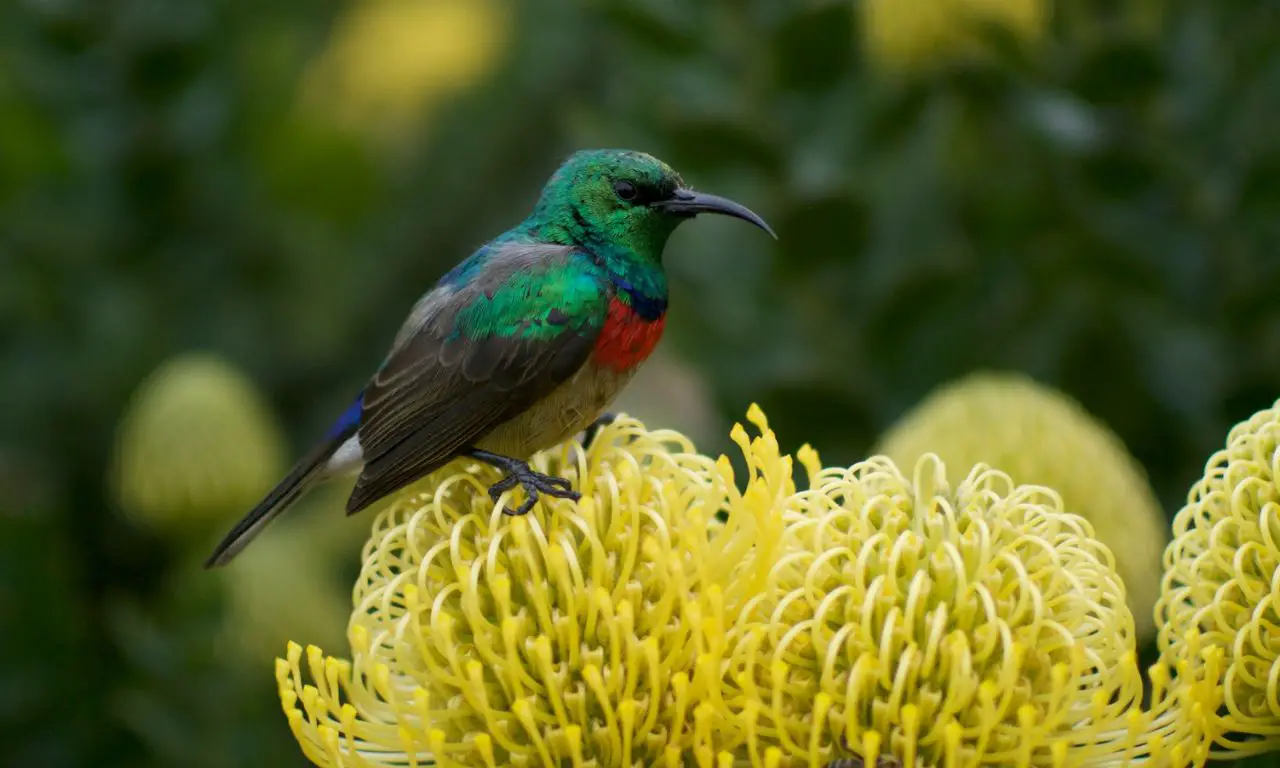
When you walk into Kirstenbosch, it’s like stepping into a painting that’s alive with colors, scents, and sounds. The landscape is a big mix of hills, valleys, and open spaces, all filled to the brim with plants. There are more than 7,000 kinds of plants here, and the best part? They’re all from Southern Africa. It’s a place that shows off just how rich and unique our nature is.
There’s this special spot called the Tree Canopy Walkway. People call it the “Boomslang” because it’s shaped like a snake, and when you walk on it, you’re up in the trees, looking out over the gardens and the mountain. It’s an incredible way to see the garden from above.
And the flowers! When spring rolls around, the garden is full of bright colors from all the different flowers blooming. There’s this flower called the king protea – it’s big and pretty and also happens to be our national flower.
Looking at all these plants, it’s kind of amazing to think about how each one fits into the big picture of our environment back home.
Activities to Enjoy
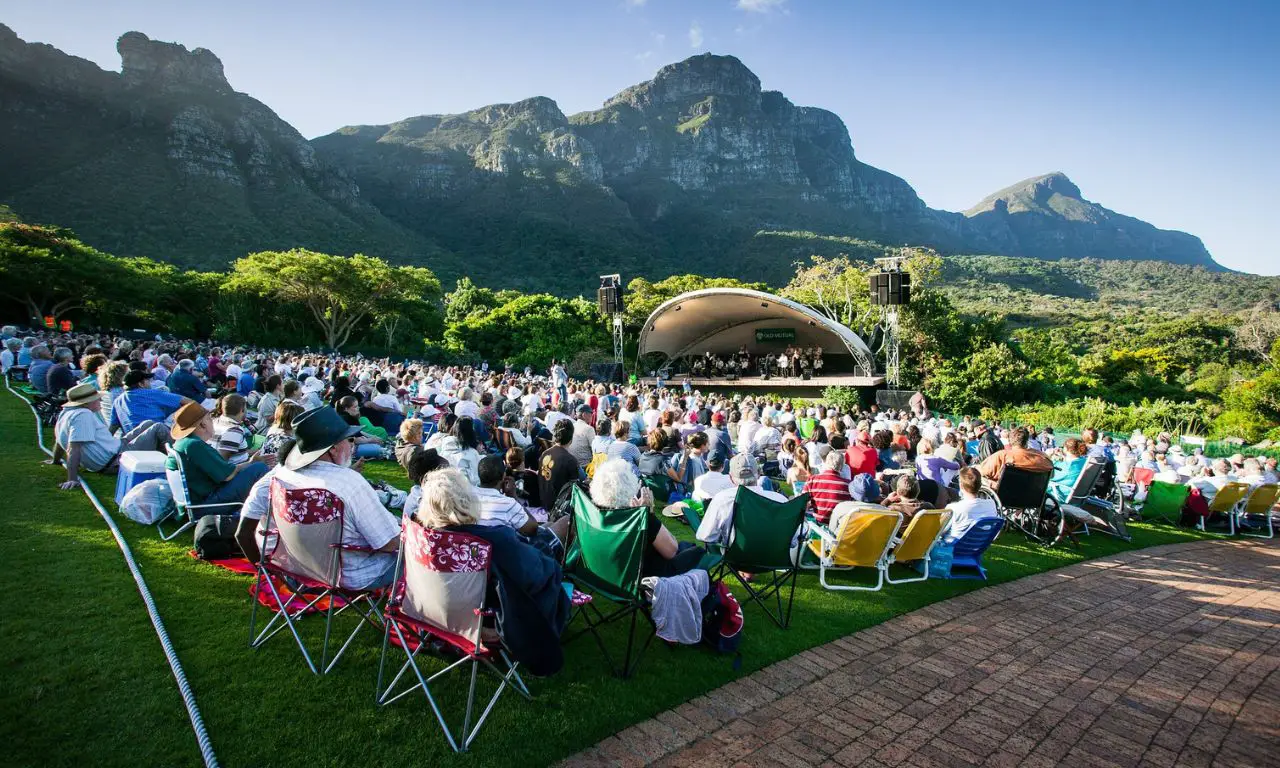
At Kirstenbosch, it’s not just about walking around and taking in the sights. There are a bunch of things to do that can fill your day with fun and learning. For one, you can join a guided walk. That’s where someone who knows a lot about plants takes you around and tells you cool stories and facts about what you’re seeing.
Then, during summer, the garden turns into a concert venue. Imagine listening to live music as the sun sets behind the mountain – it’s pretty special. Lots of people come with their friends and family, spread out blankets, and just enjoy the music and the outdoors together.
If concerts aren’t your thing, maybe you’d like a picnic.
You can bring your own basket full of snacks and find a nice spot to just sit and relax. Families love it because there’s a lot of space for kids to run around and play, and it’s safe too. It’s a nice way to spend a day outside, away from the busy city life.
Conservation and Research Efforts
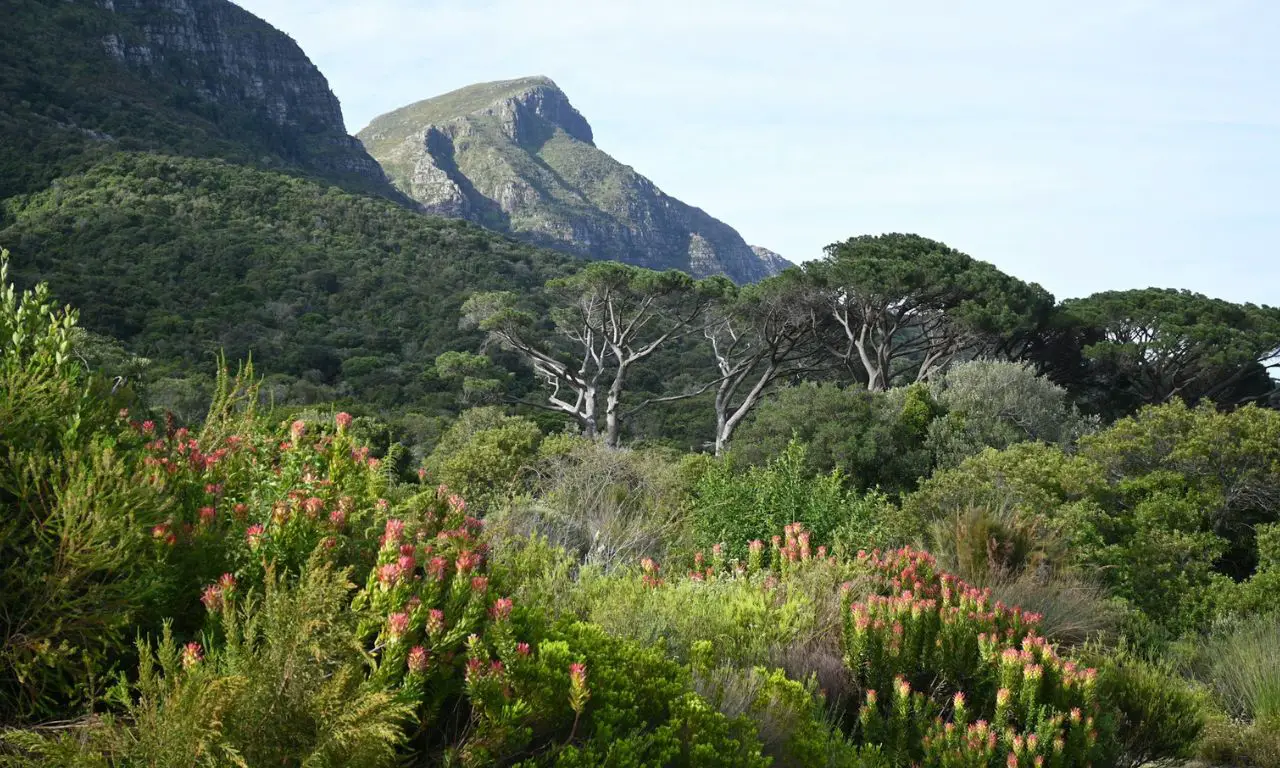
Now, let’s talk about something super important. Kirstenbosch isn’t just a pretty face; it’s got brains and a big heart for protecting plants. Here, they work hard to look after the types of plants that are in danger of disappearing from our world. They grow them, study them, and teach others how to save them too.
It’s like a hospital and a school just for plants.
The people here team up with experts from all around to learn more and to share what they know about how to keep our environment healthy. There’s always some kind of research project going on, like figuring out how to grow plants that are really hard to grow or finding better ways to fight plant diseases.
This work is a big deal because some of the plants they look after can’t be found anywhere else.
Protecting these plants means making sure that the bees, birds, and other creatures that depend on them can survive too. So, by taking care of plants, the garden is actually taking care of a whole lot more.
Visiting Kirstenbosch
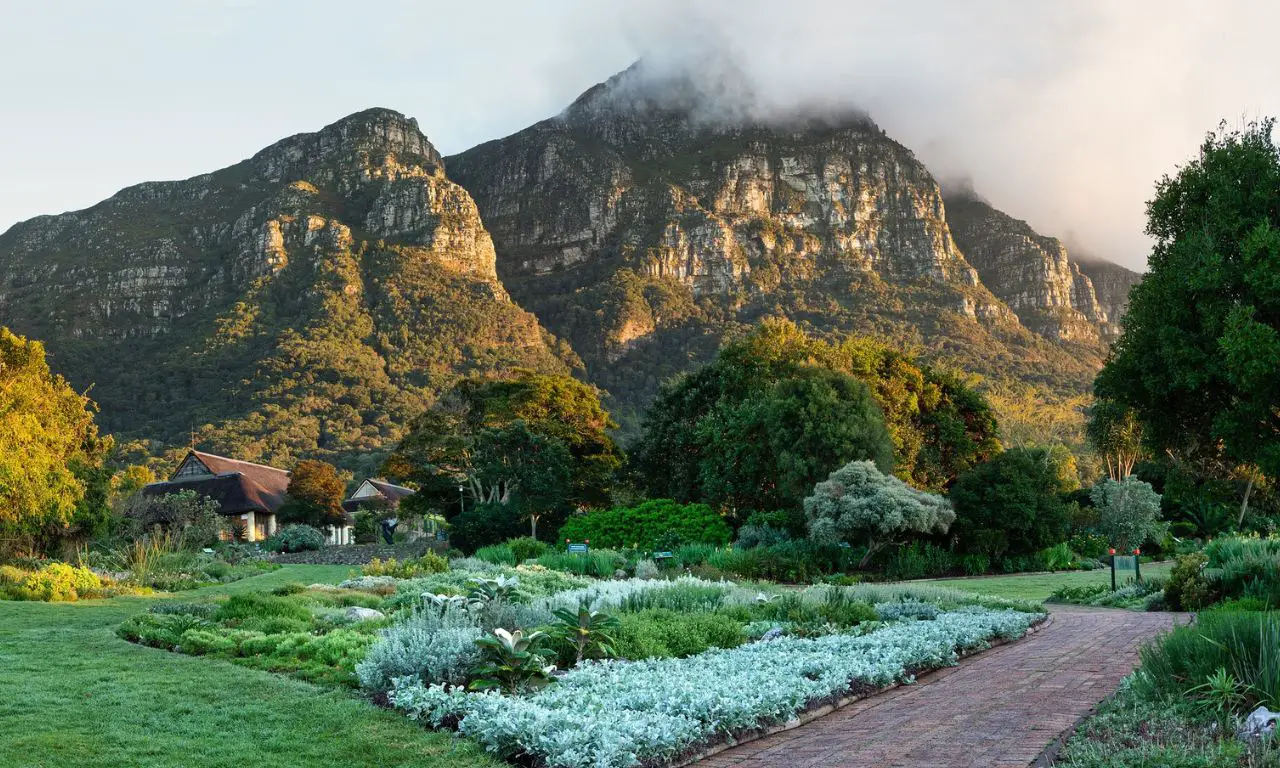
If you’re now thinking, “I’ve got to see this place for myself,” then you’ll need the inside scoop on how to make the most of your visit. So, first up, when’s the best time to go? Well, the garden’s open all year, but if you want to see the most flowers, you should go between August and November.
That’s when it’s spring here, and it’s like a big, bright party of plants.
Before you head out, here are a few tips. Wear some comfy shoes because there’s a lot of ground to cover. And don’t forget your camera, because you’ll want to remember the beautiful sights. It’s also a good idea to grab a map at the entrance or just download one on your phone before you go, so you don’t miss any cool spots.
Kirstenbosch charges a small entry fee, and trust me, it’s totally worth it. The money helps keep the garden looking awesome. And, don’t worry about when to get there; it’s open every day from 8 in the morning until 6 or 7 in the evening, depending on the time of the year.
Click here to book your tickets to Kirstenbosch National Botanical Garden.
Henry Harold Pearson
Henry Harold Pearson, a man from England, came to South Africa long ago, around 1903, and he was really smart about plants. He was the one who started the National Botanical Institute here.
When Pearson first saw the land that’s now Kirstenbosch, he thought it was perfect for a garden just for South African plants.
He wanted a place where people could come and see how special our plants are and learn about them, too. So in 1913, with some help from the government and a kind lady’s money, he made Kirstenbosch happen. Even though he died before the garden was all done, the work he started made it one of the best in the world, and people still come from all over to see it.
Pearson worked super hard to make sure people understood how important it is to look after our nature, and we can all be grateful for that because now we have this amazing place to enjoy.
Compton Herbarium
Inside Kirstenbosch, there’s a special building called the Compton Herbarium. It’s like a huge library, but instead of books, it’s filled with dried plants, which are called herbarium samples.
These samples help scientists learn about all the different kinds of plants in South Africa. They’re really careful to label each one with a name and where it came from. When new plants are found, or when someone needs to know more about a certain plant, the Compton Herbarium is the place to go.
It’s named after a man named Robert Harold Compton, who was in charge of Kirstenbosch a long time ago. He worked really hard to make sure that the garden and the herbarium were good places for learning and that they helped protect plants.
Today, lots of scientists and students use the herbarium to study plants, figure out how to save them, and everything else that helps us understand our natural world better.
The Botanical Society
The Botanical Society is a group of people who really love plants and care about our environment.
They got started back in 1913, the same year Kirstenbosch was founded, and they’ve been helping out ever since. The society helps by raising money, teaching people how to care for our plants, and supporting all the work that goes into making the garden a great place. They also create books and guides about South African plants that anyone can buy.
By being part of the society, people can make a real difference in protecting our green spaces and the special plants that live there. So, the Botanical Society is super important for Kirstenbosch because they gather plant lovers and helpers to make sure the garden keeps growing strong.
J.W. Mathews
J.W. Mathews was one of the early friends and a kind supporter of Kirstenbosch National Botanical Garden. Back when the garden was just an idea, he gave a generous gift of money that really helped.
He also played a key role in getting the place ready for everyone to enjoy. Because of his support, they could buy the land next to the garden, which let Kirstenbosch grow bigger and become even more beautiful. This extra space meant more room for plants and for people to walk around. Without kind folks like J.W. Mathews, the garden might not be the amazing spot it is today.
His gift was a big deal, and it’s one of the reasons why now, years later, we can walk around Kirstenbosch and see so many wonderful plants and animals.
Neville Pillans
Neville Pillans was another plant expert who did a lot for Kirstenbosch National Botanical Garden.
He knew tons about plants, especially the ones called succulents, which are those cool, chubby plants that can hold water really well. Back when he was working, which was around the middle of the 1900s, Pillans helped the garden by finding new plants that nobody had seen before and bringing them to Kirstenbosch.
He took care of the succulent plants in the garden, making sure they were healthy and happy. Because of his hard work, the garden’s collection of succulents grew to be one of the best around.
Pillans worked at Kirstenbosch for a long time, and his knowledge and love for plants made a big difference, helping us all learn more about these amazing parts of our natural world.
CapeNature
CapeNature is an organization that’s all about protecting nature here in the Western Cape. It’s their job to look after the outdoors and make sure that the animals and plants are safe.
They take care of huge areas of land, which are called nature reserves.
These places are homes to all kinds of wildlife, from big animals to tiny insects, and, of course, lots of different plants. CapeNature also helps people understand how important it is to take good care of our environment. They work on keeping the water clean, stopping wildfires, and saving animals that are in danger of going away forever.
For anyone who loves being outside and wants to help keep things natural and beautiful, CapeNature is an important friend and protector of our natural treasures.
The South African National Biodiversity Institute
The South African National Biodiversity Institute, also known as SANBI, is a big organization that takes care of our country’s plants and animals.
SANBI makes sure we know what kinds of life we have in South Africa and how we can protect them. They manage botanical gardens, like Kirstenbosch, across the country, creating safe spaces for plants to grow. Besides making sure the gardens are nice for us to visit, they do serious science work, studying plants and teaching people about why they are so important.
SANBI also looks at how our daily lives and the choices we make can affect nature. They tell the government what might be harmful and give good advice on how to look after our environment, so it stays healthy for many years to come.
Conclusion
Kirstenbosch National Botanical Garden is more than just a pretty place; it’s a treasure filled with history, beauty, and stories.
When you visit, you’re walking through a living museum where every plant has its own tale. It’s also a center for learning and saving our unique South African plants.
Whether you love nature, music, or just want a peaceful day out, Kirstenbosch is a place that brings all sorts of people together. It’s part of our heritage, and every visit supports the great work they do in conserving our natural world. So, next time you’re looking for something to do, why not head to the garden?
Breathe in the fresh air, learn something new, and maybe even drop by the gift shop to take a little piece of Kirstenbosch home with you.
Frequently Asked Questions
Can I bring my dog to Kirstenbosch?
No, they don’t allow pets in the garden. It’s to keep the plants and the wildlife safe. Plus, it’s not a regular park; it’s a place that’s all about protecting nature, and dogs might disturb the balance they work hard to keep.
Are there places to eat inside the garden?
Yes, there’s a few spots where you can grab some good food. There’s a nice restaurant and a tea room where you can sit down for a meal, and there are also places to get snacks if you just want something quick to munch on while you explore.
Can I have a wedding at Kirstenbosch?
Absolutely, it’s a popular spot for weddings because it’s so beautiful. You’ll need to book in advance, and there might be some rules to follow, but getting married in the middle of all the flowers and trees sure does sound like a dream.
Do they offer any educational programs for kids or schools?
Yes, they do! Kirstenbosch has programs for school groups where they can learn all about plants and the environment. And during school holidays, they often have cool activities for kids that are not only fun but also help them learn about nature.
